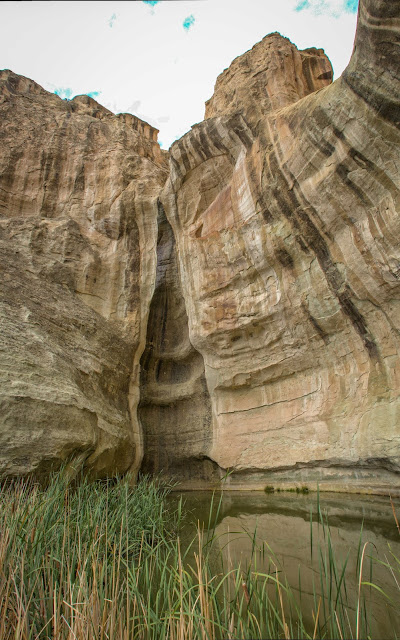In late August, I went with my friend, Alan, and about 20 others on a two-day tour of 25 churches and chapels in northern New Mexico. The tour was sponsored by the Corrales Arts Center and was organized by Dennis Chamberlain and Lynda Livesay, who did an excellent job!
 |
| Photo courtesy of Dennis Chamberlain |
 |
| The view from our direction |
The churches ranged from iconic structures such as the world-famous (and oft-photographed) San Francisco de Asis church in Ranchos De Taos and the rustic Santuario de Chimayo in Chimayo, both designated as National Historic Landmarks . . .
 |
| San Francisco de Asis, Ranchos De Taos, NM (circa 1810) |
 |
| Santuario de Chimayo, Chimayo, NM (completed 1816) |
. . . to simple chapels such as the San Francisco de Asis church in Golden; the Nuesta Senora de los Dolores church in Pilar; and the Nuesta Senora de San Juan de los Lagos in Talpa:
 |
| San Francisco de Asis, Golden, NM (circa 1830) |
 |
| Nuesta Senora de los Dolores, Pilar, NM (1892) |
 |
| Nuesta Senora de San Juan de los Lagos, Talpa, NM (1828) |
Some churches and chapels were clearly abandoned . . .
 |
| San Isidro Family Chapel, near Sapello, NM |
 |
| Holman Church, Holman, NM |
. . . while others are obviously well-kept and still in use:
 |
| Santo Nino de la Atoche |
 |
| Santo Nino de la Atoche (interior) |
 |
| St. Anthony Catholic Church, Questa, NM |
 |
| St. Anthony (interior) |
St. Anthony's also had some beautiful (but contemporary) stained glass windows:
Many of the churches also had cemeteries on the property -- and you know how I enjoy photographing cemeteries. Here are a few samples:
 |
| I would title this one "Sleeping It Off." |
And here's how I got the image above . . .
 |
| Photo courtesy of Daryl Lee |
From a photography/visual perspective, on the first day we had a great sky starting with a beautiful sunrise over the Sandia Mountains . . .
which turned into high streaky clouds that made for some dramatic images throughout the morning:
This one (below) was a bit unusual. I call it "Pi in the Sky."
Later in the day, I had time to break out my drone and capture some images of a beautiful solitary church from above (That's my friend, Alan, down there in the left corner.)
 |
| San Rafel Mission Church, La Cueva, NM |
Besides the churches and chapels, there were lots of classic New Mexico scenes that begged to be photographed. On the first morning after photographing an old church in the tiny village of Lamy, we drove a quarter-mile to the Lamy train station, which remains in use as the Amtrak station nearest Santa Fe.
On a sidetrack near the station were old coach railway cars that are being refurbished for use on a private wine and food excursion train that will run between Lamy and Santa Fe eighteen miles away.
We stopped for lunch in Las Vegas, NM, where crews were shooting scenes for the TV series, Roswell, New Mexico, which airs on the CW network. Some of the streets were blocked off for filming, so we didn't see any of the production, but we spotted a classic Cadillac that was used in the show:
 |
| (It wouldn't be a good New Mexico road trip without an old beat-up car!) |
And on a main street there was an old mural that was created in 1983 for the movie Red Dawn:
On the second day of the tour we had lunch at the jokingly-named Pilar Yacht Club, a cafe and tourist store on the banks of the Rio Grande south of Taos:
We also visited the nearby Classical Gas Museum, featuring artifacts from the golden era of cars and gasoline brands:
And, of course, there was the mandatory derelict automobile on the premises:
If you would like to see these images in a larger format, please visit my photography website, Todos Juntos Photography, by clicking here.
Enjoy!







































